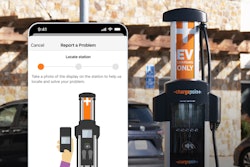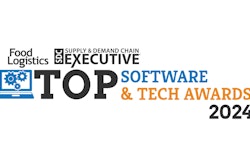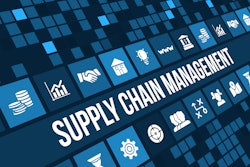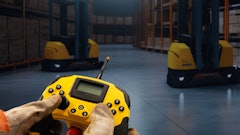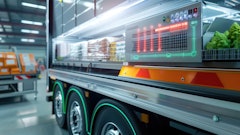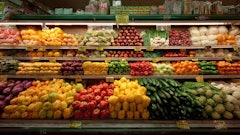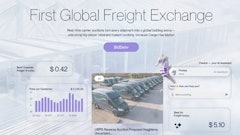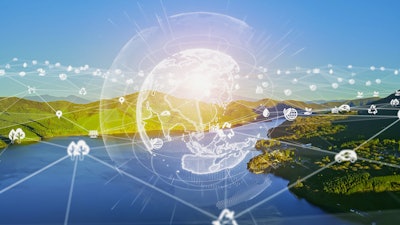
Three statistics tell a very stark story about the global food ecosystem. First, we already produce enough food to comfortably feed the planet’s 8 billion (and counting!) people. Second, food waste alone makes up anywhere from 6-8% of current emissions, and the global food ecosystem as a whole is responsible for approximately one-third of all emissions. Finally, one in 11 people still went hungry last year, and one in three struggled to afford healthy diets.
There is no way to sufficiently cut emissions to meet global goals without reducing emissions from the global food system. The question is: How do we reduce waste (and as a whole, emissions) without sacrificing profit or leaving people hungry? This is a complex problem, with no single miracle solution. But being smarter about agriculture is a good start and it requires embracing technology like artificial intelligence (AI).
Case 1: Livestock
When it comes to agricultural emissions, raising livestock is one of the biggest contributors. As currently practiced, raising livestock represents anywhere from 11.1% to 19.6% of global emissions. To meet the terms of the Paris Agreement, emissions have to be nearly halved by 2030, leaving livestock raising alone makes this challenge drastically more difficult.
Granted, livestock do present a great solution for reducing food waste by converting it into animal feed. This is a recommended practice from the EPA among other authorities. But feeding an animal naturally results in methane and nitrogen production as part of their digestion cycles — the former is the source of New Zealand’s now-abandoned burp tax, as methane is a particularly potent greenhouse gas. The more an animal is fed (or overfed), the more gas they produce. As a result, reducing food waste via animal feed may ameliorate one problem, but worsen another.
AI is exceptional at noticing patterns and seeing small things a human may not, like signs of poor health or a specific animal’s eating pattern down to the amount they eat. One study found precision livestock feeding powered by AI can reduce nitrogen excretion into the environment by nearly 40%. Considering nitrous oxide is 300x more potent than CO2, wider adoption of precision agriculture could play a massive part in reducing emissions. That same study found an increase in profitability of almost 10%, since precision feeding also means using resources more wisely and reducing overfeeding.
Case 2: Pesticides
Anywhere from 20-40% of global crop production is lost to insects/pests each year. Pesticides are a necessary evil to lower that percentage and thus reduce food waste. However, pesticides themselves are resource-expensive to produce or themselves greenhouse gasses. The Pesticide Action Network North America (PANNA) calls it a “vicious cycle,” pesticides impact the climate, the world gets warmer, and thus farmers need more pesticides. And the resources pesticides require and emissions they reduce are larger than you may realize. PANNA’s report found:
- 99% of synthetic pesticides are petroleum derivatives.
- 1 kilogram of pesticide requires an average of 10 times the energy needed for a kilogram of nitrogen fertilizer.
- Pesticides can themselves be greenhouse gasses, emitting one ton of sulfuryl fluoride, used on insects including termites and beetles, is like emitting 5,000 tons of carbon dioxide.
Advances in sensor technology and computer vision, along with better pesticide spraying equipment, have made it possible to more accurately identify if and when pesticides are needed. AI’s eye for detail is particularly useful here — models can be trained to identify hundreds or even thousands of different pests and diseases, tailored to the surrounding ecosystem, and alert farmers before an issue becomes more widespread.
Early detection and intervention could seriously reduce the amount of pesticides used — without sacrificing crop quality and even increasing profit. MIT research found that farmers could halve pesticide usage using precise methods and see similar results in terms of crops harvested. Considering that farms globally spend $60 billion per year on pesticides, reducing usage isn’t just good for the planet: it’s good for the wallet, too.
Case 3: Waste at the end of the cycle
The food cycle may start on farms, but it ends at tables. According to the National Restaurant Association, restaurants generate an estimated 22-33 billion pounds of food waste annually in the United States alone. As a whole, the United States throws out 120 billion pounds per year at a value of $218 billion, enough to translate into 130 billion meals. Thrown-out food makes up 22% of the waste in landfills in the United States, the single largest category of waste, and that food produces methane.
As previously mentioned, methane is particularly potent as a greenhouse gas, but to put it in numbers: emitting 1 ton of methane equals 28-36 tons of carbon dioxide over a 100-year period. Approximately 20% of global methane emissions come from landfills and wastewater. While “only” 60% of methane emissions are anthropogenic (the other 40% is naturally produced from environments like wetlands), their potency makes them a great target for emission reductions.
Move for Hunger points out that better inventory management is a key to reducing this number. As with livestock, AI can recognize small things and patterns – in this case, it’s whether or not food is spoiled and which foods are being wasted the most to help restaurants adjust their ordering patterns. Managing food waste could be a major profit booster: studies have found the average restaurant made a return of seven dollars on every dollar spent addressing waste.
Food waste pervades every part of the cycle, from field to farm to fork. These global problems require global solutions and rapid implementation to meet climate goals. Public and private stakeholders need to ask some tough questions. Can we take a hard look at how we support farmers? Could we change policy to reward innovation? What about making tech affordable? No one solution will solve this problem, but the more solutions we embrace, the more everybody can get involved and create a domino effect. Better resource management isn’t just good for the wallet — it’s good for the planet, too.




